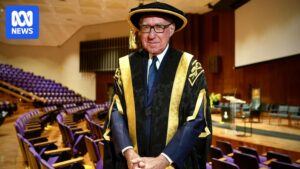
In a landmark achievement for high-performance computing, researchers from Lawrence Livermore National Laboratory (LLNL), the University of Texas at Austin’s (UT) Oden Institute, and the Scripps Institution of Oceanography at the University of California San Diego (UCSD) have been awarded the 2025 Association for Computing Machinery (ACM) Gordon Bell Prize. The accolade, announced on November 20 at the International Conference for High Performance Computing, Networking, Storage, and Analysis (SC25) in St. Louis, honors their development of a real-time tsunami early-warning framework powered by El Capitan, the world’s fastest supercomputer.
The Gordon Bell Prize is the pinnacle of recognition in high-performance computing (HPC), celebrating innovations that stretch the boundaries of computational performance, scalability, and scientific impact on critical real-world issues. The winning team demonstrated that real-time, physics-based tsunami forecasting is achievable at exascale, paving the way for faster and more reliable early-warning systems for coastal communities.
Revolutionizing Tsunami Forecasting
Omar Ghattas, a professor of mechanical engineering and principal faculty at the Oden Institute at UT, emphasized the significance of this breakthrough. “For the first time, we can combine real-time sensor data with full-physics modeling and uncertainty quantification—fast enough to make decisions before a tsunami reaches the shore,” he stated. “It is a tremendous honor for our team to receive this highest recognition in the field of supercomputing.”
The team tackled the challenge by creating innovative supercomputing algorithms for digital twins that infer seafloor motion from real-time pressure sensor data. This data is crucial for forecasting destructive tsunami waves, with the entire framework executing in a fraction of a second—10 billion times faster than conventional algorithms.
“Our goal was to show that physics-based simulation can deliver near-instant results for critical applications like tsunami warnings,” said Tzanio Kolev, LLNL computational mathematician and co-author.
Harnessing the Power of El Capitan
LLNL’s El Capitan, which maintained its status as the most powerful supercomputer ever benchmarked according to the Top500 organization, was instrumental in resolving wave simulations to the full margin of the Cascadia subduction zone in the Pacific Northwest. The supercomputer’s capabilities allowed for the largest-ever unstructured-mesh finite-element simulation, resolving 55.5 trillion degrees of freedom with LLNL’s open-source MFEM finite element library.
The Oden Institute led the project with major innovations in inverse algorithms, enabling real-time inference of seafloor deformation from offshore pressure sensor data. This ensured that the physics-based reconstructions remained stable, accurate, and consistent with real-time signals.
“The biggest technical challenge in creating the Cascadia digital twin was the enormous problem size combined with the need for providing forecasts in real time,” explained Stefan Henneking, research associate at the Oden Institute.
Implications for Global Tsunami Warning Systems
Tsunamis are among the world’s most devastating natural hazards, and current warning systems often rely on simplified approximations and sparse instrumentation. These limitations can lead to false alarms or underestimated risks. The team’s approach, grounded in physics rather than purely statistical approximations, offers a more reliable solution.
When an offshore earthquake occurs, real-time pressure sensors provide immediate readings of wave propagation. By rapidly solving the inverse problem, the system can infer the seafloor displacement scenario that most closely matches the data and generate a physics-consistent tsunami forecast in seconds.
“Our work shows that physics-based models of earthquakes and tsunami generation are now fast enough to guide real-time response,” said Alice-Agnes Gabriel, an earthquake seismologist at Scripps.
Future Directions and Global Impact
The achievement was made possible by El Capitan’s architecture, which integrates AMD Instinct MI300A Accelerated Processing Units at an unprecedented scale. With more than 46,000 APUs and over 11 million CPU cores, El Capitan provides the compute power necessary for the massive wave simulations underlying the digital twin.
The researchers plan to refine their method further, exploring integration with operational tsunami warning centers and expanding the approach to cover a broader range of geophysical hazards. They also aim to extend the modeling approach to additional regions and explore machine-learning accelerations grounded in physical principles.
Rob Neely, LLNL Weapon Simulation and Computing Associate Director, remarked, “Winning the Gordon Bell Prize is an extraordinary recognition of what this team has achieved. This project highlights the versatility of El Capitan as a tool for real-world impact and shows what happens when computational innovation meets real-world urgency.”
As the team continues to push the boundaries of what exascale computing can achieve, their work stands as a testament to the potential of high-fidelity modeling and advanced numerical methods to address urgent global challenges.





